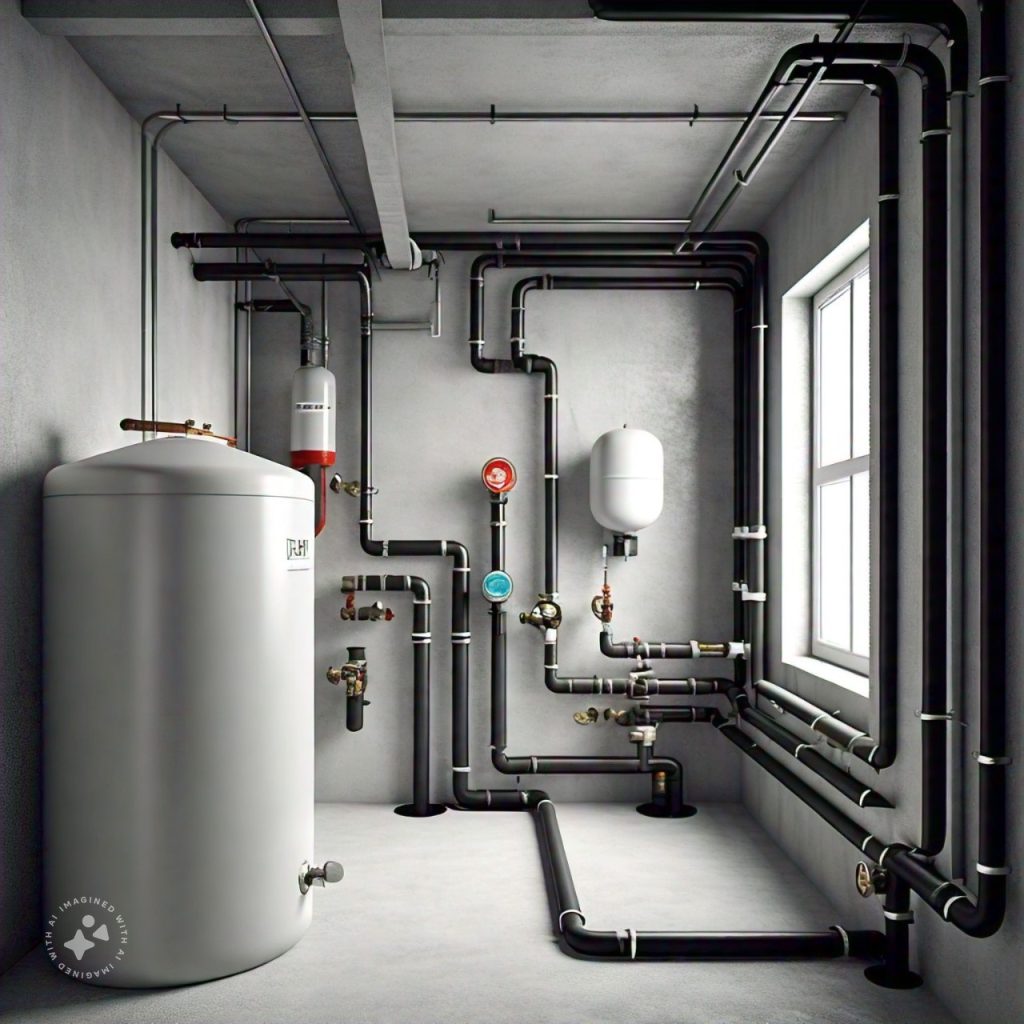Plumbing systems are crucial for any residential or commercial building, providing essential services such as clean water supply and waste disposal. Understanding the main components of a plumbing system can help you maintain it better and address issues more efficiently. This comprehensive guide explores the two main parts of a plumbing system: the water supply system and the drainage system. By delving into the specifics of each part, their functions, and how they work together, you can gain a clearer understanding of your plumbing infrastructure.
A well-functioning plumbing system is vital for modern living, ensuring access to clean water for drinking, cooking, and sanitation while safely disposing of wastewater. The two main parts of a plumbing system are:
- Water Supply System
- Drainage System
Each of these systems plays a unique role in ensuring the efficient operation of plumbing within a building.
Table of Contents
TogglePart 1: Water Supply System
The water supply system is responsible for delivering clean water to various fixtures and appliances within a building. This system involves several components and processes, including water sources, distribution pipes, valves, and fixtures.
Water Sources
Water supply systems can source water from municipal water systems or private wells. Municipal water systems treat and deliver water to homes and businesses through a network of pipes. In contrast, private wells draw groundwater through pumps and deliver it to the property.
Distribution Pipes
Distribution pipes transport water from the source to various points of use within the building. These pipes can be made of various materials, including copper, PVC, PEX, and galvanized steel. The choice of material often depends on factors such as cost, durability, and local building codes.
Main Components
- Main Shutoff Valve: This valve controls the entire water supply to the building. It is typically located near the water meter and should be easily accessible for emergency shutoff.
- Pressure Regulator: This device ensures that water pressure remains within safe limits to prevent damage to pipes and fixtures. High water pressure can cause leaks, burst pipes, and damage to appliances.
- Pipes and Fittings: These transport water to various fixtures. Pipes come in different sizes and materials, each suited for specific applications within the water supply system.
- Fixtures: These are the endpoints of the water supply system where water is used, such as faucets, showers, toilets, and appliances like dishwashers and washing machines.
Water Distribution Process
Water enters the building through the main supply line and passes through the shutoff valve and pressure regulator. From there, it is distributed to various fixtures through a network of pipes. Each fixture typically has its own shutoff valve to allow for maintenance or emergency repairs without shutting off the entire system.
Maintenance Tips
- Regular Inspection: Check for leaks, corrosion, and signs of wear in pipes and fittings.
- Pressure Monitoring: Ensure the pressure regulator is functioning correctly to prevent damage.
- Winterization: Insulate pipes in unheated areas to prevent freezing and bursting during cold weather.
Part 2: Drainage System
The drainage system is responsible for removing wastewater and sewage from the building and directing it to the municipal sewer system or a private septic system. This system includes various components such as drain pipes, traps, vents, and cleanouts.
Main Components
- Drain Pipes: These pipes carry wastewater away from fixtures. They are typically made of materials like PVC, cast iron, or ABS. Drain pipes are larger in diameter than supply pipes to accommodate the volume of wastewater.
- Traps: These are U-shaped sections of pipe located beneath each fixture. They hold a small amount of water to create a seal that prevents sewer gases from entering the building. Common types of traps include P-traps and S-traps.
- Vent Pipes: These pipes allow air to enter the drainage system to maintain proper pressure and facilitate the smooth flow of wastewater. Vent pipes also release sewer gases outside the building.
- Cleanouts: These are access points installed in the drainage system to allow for the removal of blockages. They are typically located at strategic points such as the base of vertical stacks and outside the building.
Wastewater Removal Process
When water is used in a fixture, it flows through the trap and into the drain pipes. The wastewater then travels through a network of pipes, which are sloped downward to facilitate gravity-assisted flow. Vent pipes maintain air pressure, preventing vacuum conditions that could impede drainage. The wastewater eventually reaches the main drain line, which connects to the municipal sewer system or septic tank.
Types of Wastewater
- Black Water: Wastewater from toilets that contains human waste and requires treatment.
- Gray Water: Wastewater from sinks, showers, and appliances that can be reused for non-potable purposes with minimal treatment.
Maintenance Tips
- Regular Cleaning: Clean traps and drains regularly to prevent blockages.
- Proper Use: Avoid disposing of grease, large food particles, and non-biodegradable items in drains.
- Vent Maintenance: Ensure vent pipes are unobstructed to maintain proper airflow.
How the Two Systems Work Together
The water supply and drainage systems are interconnected, with each fixture serving as a transition point between the two. For example, water from the supply system enters a sink faucet, and the used water drains away through the drainage system. Proper functioning of both systems is essential for overall plumbing efficiency and sanitation.
Common Plumbing Issues and Solutions
Leaks
Leaks can occur in both the water supply and drainage systems. Identifying the source of the leak and repairing or replacing the damaged components is crucial.
Clogs
Clogs are common in the drainage system and can result from the accumulation of debris or improper disposal of waste. Regular cleaning and the use of drain screens can help prevent clogs.
Low Water Pressure
Low water pressure can be caused by issues in the supply system, such as leaks, blockages, or malfunctioning pressure regulators. Identifying and addressing the root cause is essential for restoring proper pressure.
Sewer Backups
Sewer backups occur when there is a blockage or damage in the main sewer line. Regular maintenance and prompt attention to warning signs such as slow drains and foul odors can help prevent backups.
Conclusion
Understanding the main parts of a plumbing system—the water supply system and the drainage system—can help you maintain your plumbing infrastructure effectively. By knowing how these systems work, their components, and common issues, you can ensure your plumbing operates smoothly and address problems promptly. Regular maintenance, proper use, and timely repairs are key to a reliable and efficient plumbing system. Whether you are a homeowner or a professional, a well-maintained plumbing system is essential for a comfortable and functional living environment.

